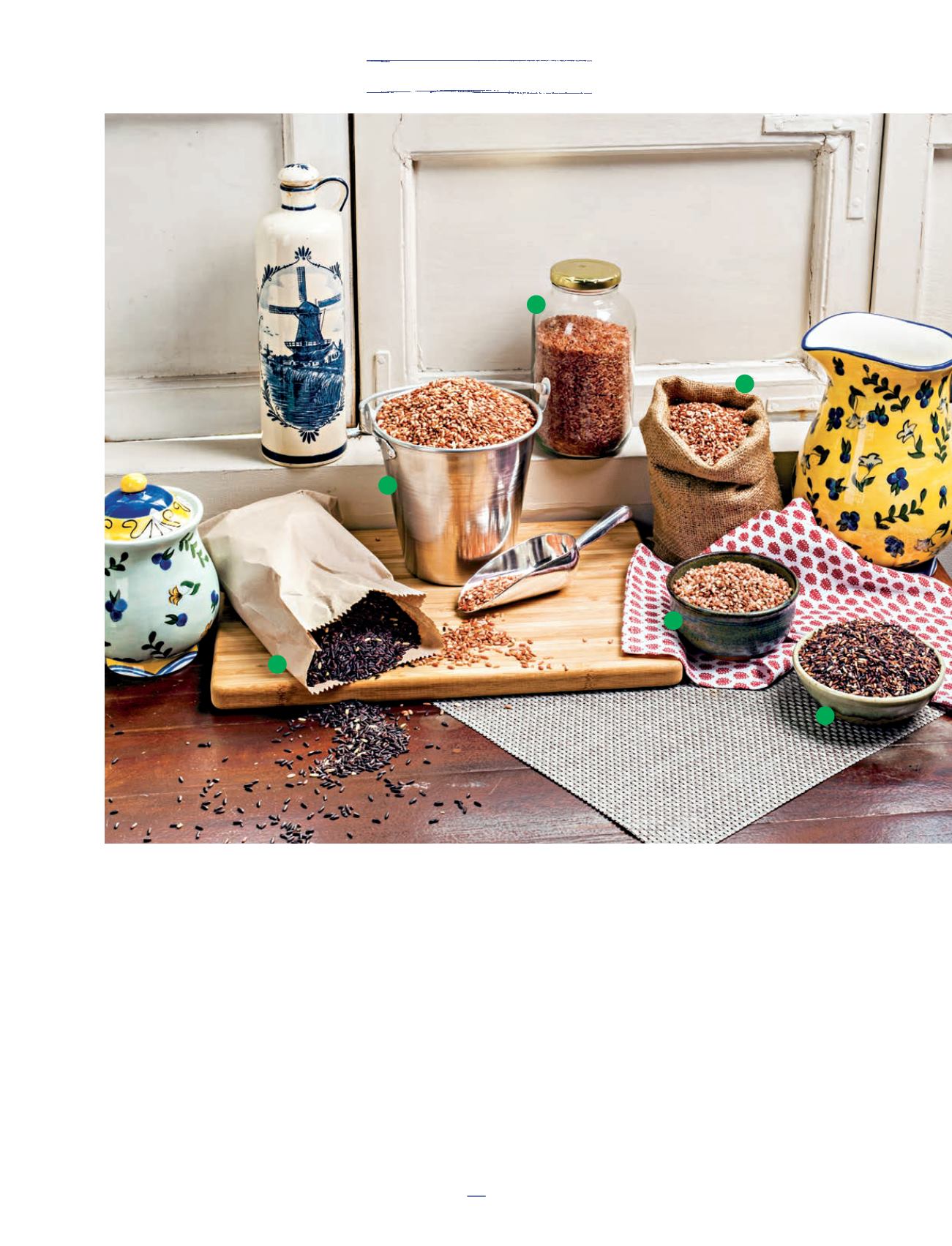
97
FARM TO TABLE
Heirloomrice
To Besa, heirloom rice — colorful,
varied grains grown in small family
plots — is the taste of Philippine
culture itself. Each grain of heirloom
rice is the descendant of an unbroken
line to the country’s ancestral past,
passed down season after season and
innumerable generations. Each harvest
forms a direct line to what our Filipino
forefathers ate and found delicious. It
is an expression of the Filipino palate,
thousands of years in the making.
Adding to the appeal is the deep
locality of heirloom rice varieties.
Terroir
, a termmost often applied to
French wines, refers to the influence of
the soil on the flavor of the food. “You
can grow the same grain in different
parts of the country, and it will taste
different,” Besa explains. “This is why
we have to preserve and promote these
things because this is the taste of the
Philippines, the taste of our earth.”
“Each of those rice varieties contains
a motherlode of memories of flavors,”
says Besa. Earthy, stout-grained
bongkitan
white from the Benguet
terraces tastes like cuchinta
,
and
balances well with long-grain white.
Sweet, black Bukidnon rice is tended
by ducks who paddle around eating
pests and fertilizing the fields. Savory
lasbakan
, from the terraced fields of the
Benguet highlands, smells like
chorizo
while being cooked and tastes a bit like
chicken. Red, glutinous
tinawon diket
from Ifugao is boiled with twice the
amount of water used for white rice
and, unadulterated, has the bittersweet
earthiness of tablea champorado.
“Once you start appreciating them,”
Besa says, “and being able to manipulate
them for different purposes and dishes,
then you will really be rewarded with a
treasure trove of riches.”
1
Duck rice
2
Red unoy
3
Mindoro red
4
Ifugao
5
Lasbakan
6
Mindoro black
1
2
3
4
5
6


